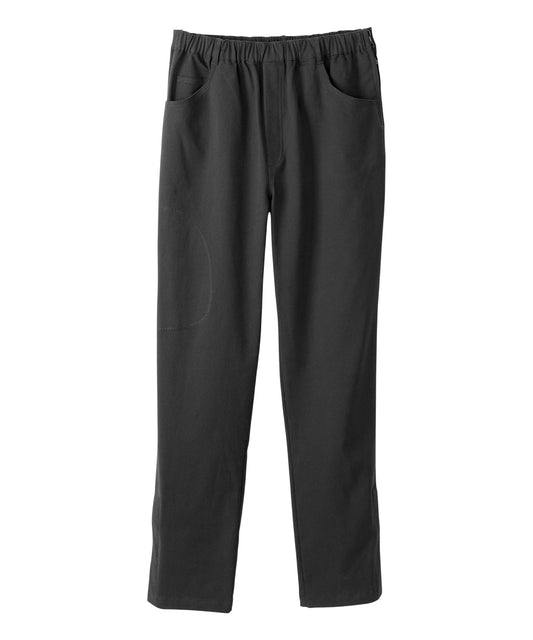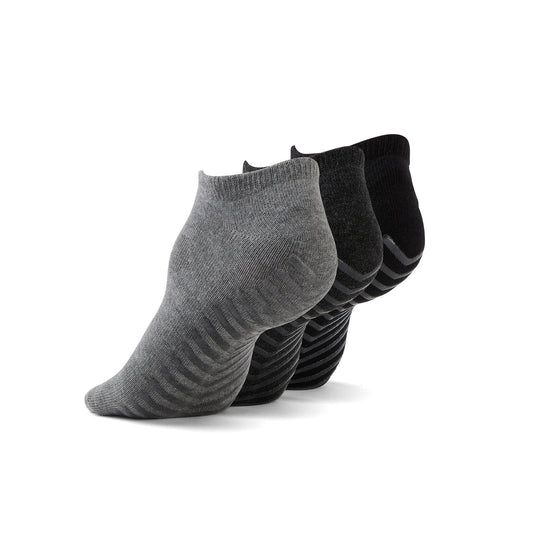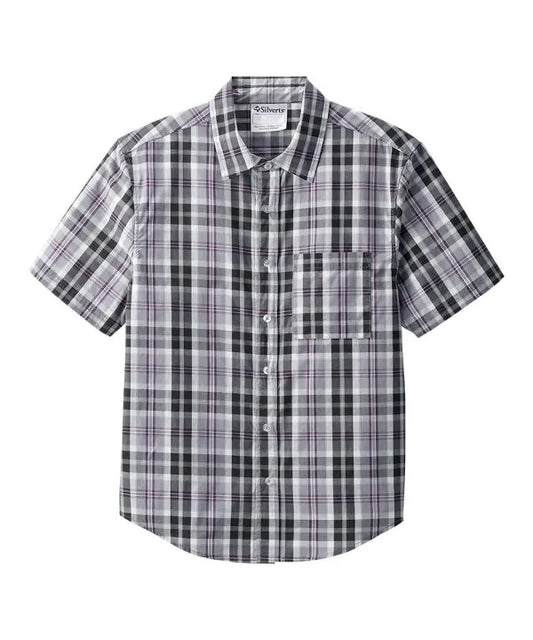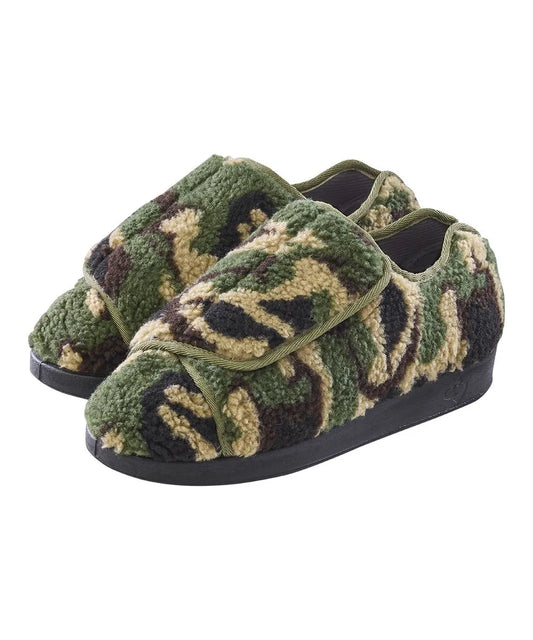Written by: Zuhair Augla
Adaptive fashion is undergoing an exciting transformation as innovative technology is blended together to meet the needs of a diverse clientele without sacrificing style. In the post, we are looking into the latest on adaptive clothes, how mainstream brands push adaptive elements in their collections, exploring 3D printing and AI in personalized garment construction, having a word on sustainability, and why advocacy plays an essential role in this dynamism. In this article, read how adaptive fashion is changing lives and ultimately enabling those with disabilities to have more effortless dressing and to dress confidently and independently, too.
What Are Some New Technologies Being Harnessed to Develop Adaptive Wear?
Lately, technological innovation has reshaped adaptive clothing in several ways. One way is to develop smart textiles with sensors and conductive fibers that monitor one's body temperature by adjusting ventilation to improve wear comfort and health monitoring. Several shirts have started opening micro-vents automatically in hot temperatures, closing when it gets colder for warmth.
Robotics have also upgraded manufacturing in adaptive clothing. Machines can make complex patterns with precision to ensure consistency and secure fastenings, giving rise to user-friendly alternatives like magnetic closures and Velcro.
Women’s Reversible Front Vest with Magnetic Closure
For individuals looking for magnetic closure clothes can check out this women’s reversible front vest with magnetic closures, it's casual and discrete making it a great choice in everyday clothing, check it out on JuneAdaptive.com.
How do mainstream fashion brands adapt to having a line for adaptive clothing?
Adaptive clothing is fast becoming embraced by mainstream fashion brands, marking a sea change in the industry towards inclusivity. Companies like Tommy Hilfiger, Target, and Victoria's Secret are launching adaptive lines with adjustable fits and easy-access closures that seamlessly blend style with functionality.
Men’s Long Sleeve Polo Shirt with Open Back
This men’s long sleeve polo shirt can be found on JuneAdaptive.com and it has the perfect blend of formal attire whilst being adaptive. The open-back design provides complete dignity and full coverage. These collections include garments designed for ease of movement, specifically for wheelchair users, while maintaining contemporary fashion trends. In addition, models with disabilities appear in branding campaigns, making adaptive fashion regular and challenging typical conceptions of beauty. This, again, is a strong message that says fashion should be for all.
Big brands' collaborations with adaptive design experts ensure that clothes can be both functional and fashionable, which in turn helps bring down costs and make items more available.
What Role Do 3D Printing and AI Play in Creating Personalized, Inclusive Fashion?
Where fashion meets technology, 3D printing, and AI are revolutionizing customized adaptive clothes. This allows designers to make clothes that will exactly suit the needs of people, whether they are disabled or differently shaped.
3D printing enables the creation of custom-fit components and garments with unprecedented accuracy. This is especially helpful for those out of the standard proportion, allowing the creation of adjustable closures or custom supports. Rapid prototyping enhances design, yielding adaptive clothing with perfect fit, comfort, and functionality.
AI further develops this by analyzing measurement and movement patterns, creating design suggestions based on body scans or customer data to ensure that the garments are optimized for both looks and ease of movement, down to independence in dressing.
The Boy's Lightweight Shoes with Front Zipper Access
This boy's lightweight shoe with a front zipper access allows kids to be supported on all their adventures. This breathable shoe can be found on JuneAdaptive.com. Besides, 3D printing and AI support on-demand manufacturing with no material waste since all garments are printed to order. This production model encourages sustainable manufacturing, making adaptive clothes green and personal for anyone.
As these technologies continue to evolve, the future of adaptive fashion will only grow toward perhaps having clothes that adapt in real-time to one's movements or even changes in one's surroundings; now, that would be something quite inclusive in fashioning.
How Do You Combine Technology and Eco-Friendly Materials to Make Fashion Sustainable?
Sustainability is one of the drivers behind some of today's most exciting fashion innovations, and adaptive clothing is no different. Designers and manufacturers are increasingly combining advanced technologies with eco-friendly materials to create high-performance garments that are responsive to the environment.
One of the most significant developments in this field is using sustainable textiles. Fabrics used in modern adaptive clothing are made from a variety of environment-friendly processes, such as organic cotton, recycled polyester, and bio-based fibres. These materials are not only gentle on sensitive skin but also reduce the textile industry's ecological footprint. For example, biodegradable fabrics and low-impact dyes minimize water consumption and chemical waste, therefore being perfect for sensitive skin and eco-conscious consumers.
Another technological breakthrough contributing to adaptive fashion's sustainability is digital textile printing. Contrasting with traditional dyeing methods, it uses less water and energy; small lots can be produced for such printing, reducing waste. This method will perfectly place patterns and designs, ensuring that every garment is made to order, thereby reducing extra production. On-demand manufacturing, enabled by digital technologies such as 3D printing and AI, further supports sustainability by making products only when needed, thus avoiding overproduction and reducing textile waste.
Besides, many brands have started to pay attention to the lifecycle of their products. By designing adaptive, durable, repairable, and timeless clothes, companies encourage consumers to invest in pieces that will last. This approach reduces waste and supports the circular economy: garments are recycled or repurposed at the end of their life. Other new business models being tried by manufacturers are renting or subscription services, further reducing the environmental impact of fashion by maximizing use per garment.
Adaptively integrating technology and sustainable materials speaks volumes about the industry's commitment to innovation and environmental stewardship. By adopting eco-friendly production practices and embracing on-demand manufacturing, the adaptive fashion sector is leading the way for a greener future while still meeting the unique needs of its users.
What Is the Role of an Advocate in Innovating the Adaptive Apparel Market?
Advocates are valuable for the success and movement of adaptive fashion: individuals and organizations dedicated to the voice of persons with disabilities need their voices placed in this process. An advocate goes much beyond an influencer or promoting product alone, to education, to affecting policy itself, right through direct engagement in working with a designer or even the manufacturer themselves for better improvements within clothing's accessibility and functionality.
One of the most critical roles of an advocate involves raising awareness. Every day, many people with disabilities have to make accommodations while seeking practical and fashionable clothing options. Advocates use personal stories, social media campaigns, and community events to bring such challenges forward and demand change. Their efforts help shift public perception and make adaptive fashion a recognized and respected field within the greater realm of fashion.
Advocates also play a crucial role as key consultants in the design process. By working alongside designers, engineers, and health professionals, advocates can provide firsthand information on the real needs of persons with disabilities. Such collaboration helps make adaptive clothes innovative yet genuinely functional. Comments from advocates include the intuitiveness of closures, better seam placement to reduce irritation, and overall functionality.
In addition, advocacy helps ensure investment in policy changes. Many innovative, adaptive clothing projects start as research initiatives or pilot programs that were grant-funded through government agencies or nonprofit organizations. Advocates also help to provide a voice to increase funding and policy support of inclusive design initiatives. This could result in legislation that requires public spaces and retail environments to be more accessible to the benefit of all. They are also very instrumental in building partnerships between the fashion industry and any organizations involved in disability rights. These would help bridge the gap between market demands and consumer needs, ensuring that adaptive fashion continuously changes in a way that truly benefits its users. By championing the necessity for inclusive design, the advocates create a trickle-down effect that may raise other brands to consider adaptive elements in their collections.
Advocates are the catalysts for change in the adaptive apparel market. Their passion, expertise, and unwavering commitment to inclusion drive innovation and help create a fashion industry that is both accessible and empowering.
Conclusion
The adaptive fashion revolution is pushing the industry's boundaries with bright textiles, 3D printing, and AI to make adaptive clothing functional and fashionable. Mainstream brands are making their collections inclusive of adaptive elements while keeping priorities on sustainability through eco-friendly materials and on-demand manufacturing.
Advocacy is crucial for raising awareness, contributing to design processes, and driving policy reforms that prioritize the needs of people with disabilities. Adaptive fashion surely has a bright future with continuous technological advances toward more personalized, inclusive, and sustainable designs.
It further empowers people with old age and disabilities and symbolizes freedom to greater extents. Thus, the revolution in adaptive fashion would lead toward a future where every garment has its wearer at its heart, matching practicality with beauty and sustainability with style. This can only be done through the ongoing cooperation of brands and advocates.
To learn more about adaptive wear, check out the JuneAdaptive website https://www.juneadaptive.com


















